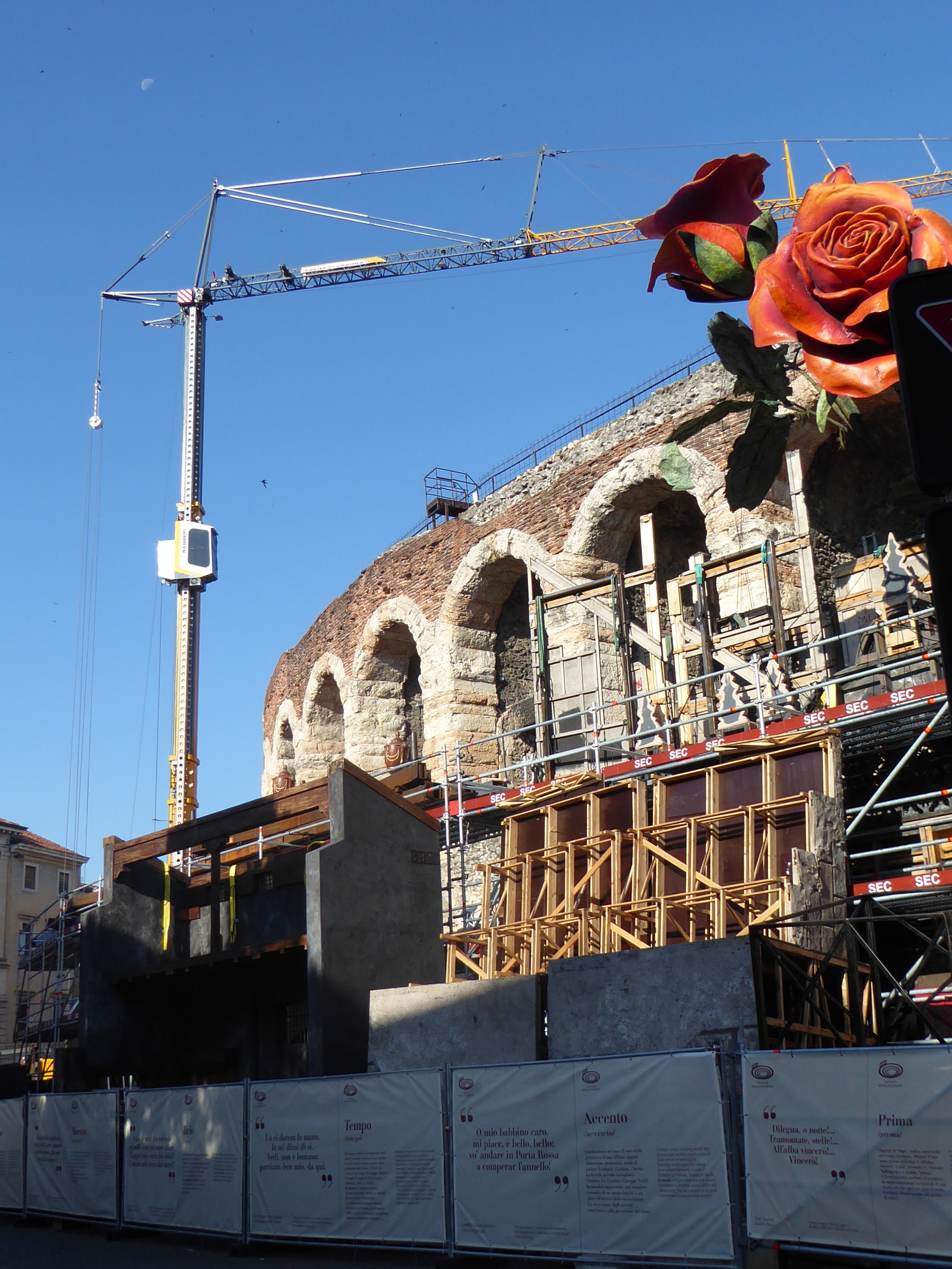Notes from Verona
Verona Arena and Piazza Bra
There is nothing quite like the Santa Fe Opera’s Crosby Theatre, where the sides of the auditorium and the back of the stage open to a view of stunning sunsets and the beautiful high desert landscape. Designed by architect James Polshek, it opened in 1998. Wind the clock back just shy of two thousand years and you will discover another exceptional opera festival location: the ancient Roman arena in Verona, Italy. I have been fortunate to attend during three different summers, beginning in 2006, again in 2007, and most recently in 2023. Whereas the Crosby Theatre seats 2,176, the arena in Verona holds up to 13,500 operagoers. The stage measures just over 154 feet wide (compared with 56 feet for the Santa Fe Opera), and the entire house is open to the elements. The massive size of Verona’s house means that productions are on a grand scale. During a 2017 interview, Giuliano Polo, General Manager of the Arena di Verona, noted, “This is the largest open-air stage in the world and we must take this into account when we program…We add extras and ballet dancers to create a great spectacle...For a typical production, we might have 150 chorus members and around 200 extras, maybe more.”
I wrapped up a two-week trip to Italy with three wonderful nights in Verona this past July. One night was just for hanging out in this lovely town. Another evening I saw a marvelous production of Rigoletto starring Ludovic Tézier in the title role and Marco Armiliato conducting.
I didn’t realize it, but I had saved the best for last: the Franco Zeffirelli production of La traviata. Zeffirelli died a few days before the production premiered on June 21, 2019. Words simply cannot describe the magnificence of the sets and costumes. The enormous stage comes alive with dazzling colors and textures. Here is a link for YouTube of a recording made in 2019. The performance that I saw featured Luca Salsi (a frequent star of La Scala and the Met Opera) as Germont and Francesco Meli as Alfredo. Both delivered excellent performances.
Crane lifting scenery into Verona Arena
The Piazza Bra, which surrounds the Arena di Verona, serves as the theatre’s set storage. An enormous crane lifts the scenic elements up and over the rim of the ancient arena. During the day, visitors can walk around in the roomy square to see components of the staging for each production.
Dopo l’opera (Italian for “after opera”) in Verona is also a wonderful experience. The restaurants and cafes that line the Piazza Bra let hungry and thirsty operagoers bask in the afterglow from a great performance. The stars of the opera often walk by on their way to a nearby hotel. A bit farther afield, the Piazza del Erbe features more eating and drinking establishments that stay open late.
It is worth noting that the weather in Verona is unpredictable. The city is only a few miles from the foothills of the Italian Alps. The same clouds that bring beautiful sunsets can also bring thunderstorms. This happened on my very first night at the Verona Arena in 2006. The rain started about an hour before curtain. Patrons clustered under umbrellas and awnings surrounding the Piazza Bra. One gentleman improvised a rain poncho with a Hefty bag over his tuxedo! Fortunately, the weather abated and we were treated to a great performance, though the start time was a bit delayed. In 2007, it started to rain part way through a performance of Aida. After about an hour of trying to outlast the weather, theatre management announced that the balance of the performance was cancelled. Unlike baseball, there were no rainchecks. You win some, you lose some.
The best seats in the house will set you back €270, while the least expensive run around €24. Surtitles are projected on screens up and to the left and right of the stage in Italian and English. The 2024 season will open on June 8, with the closing performance on September 7. The 2024 repertoire will include Tosca, Turandot, La bohème, Barber of Seville, Carmen, and Aida.
This OperaBlog was contributed by Martha Baker, Santa Fe Opera Guild Member, October 1, 2023. Photos by Martha Baker.


